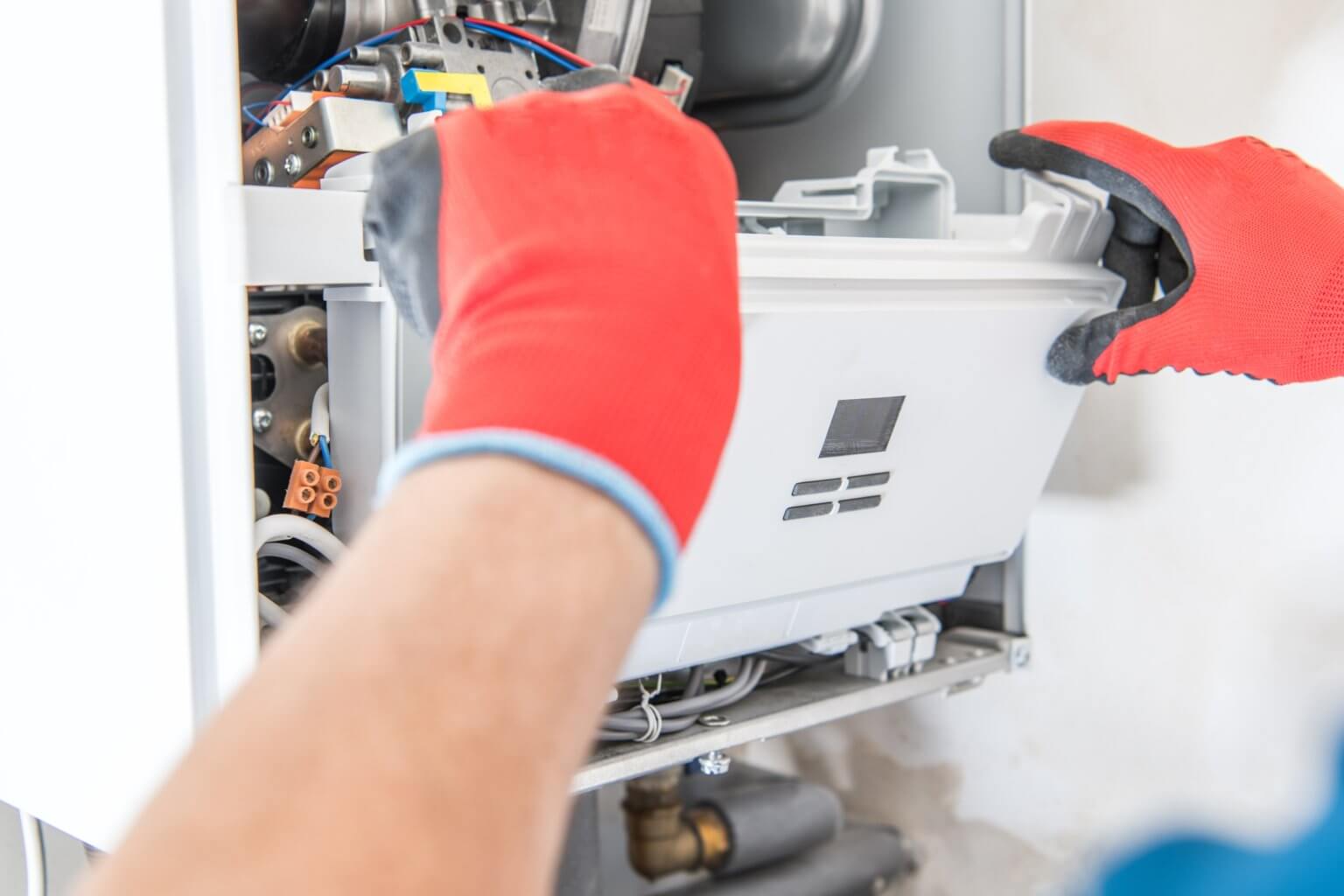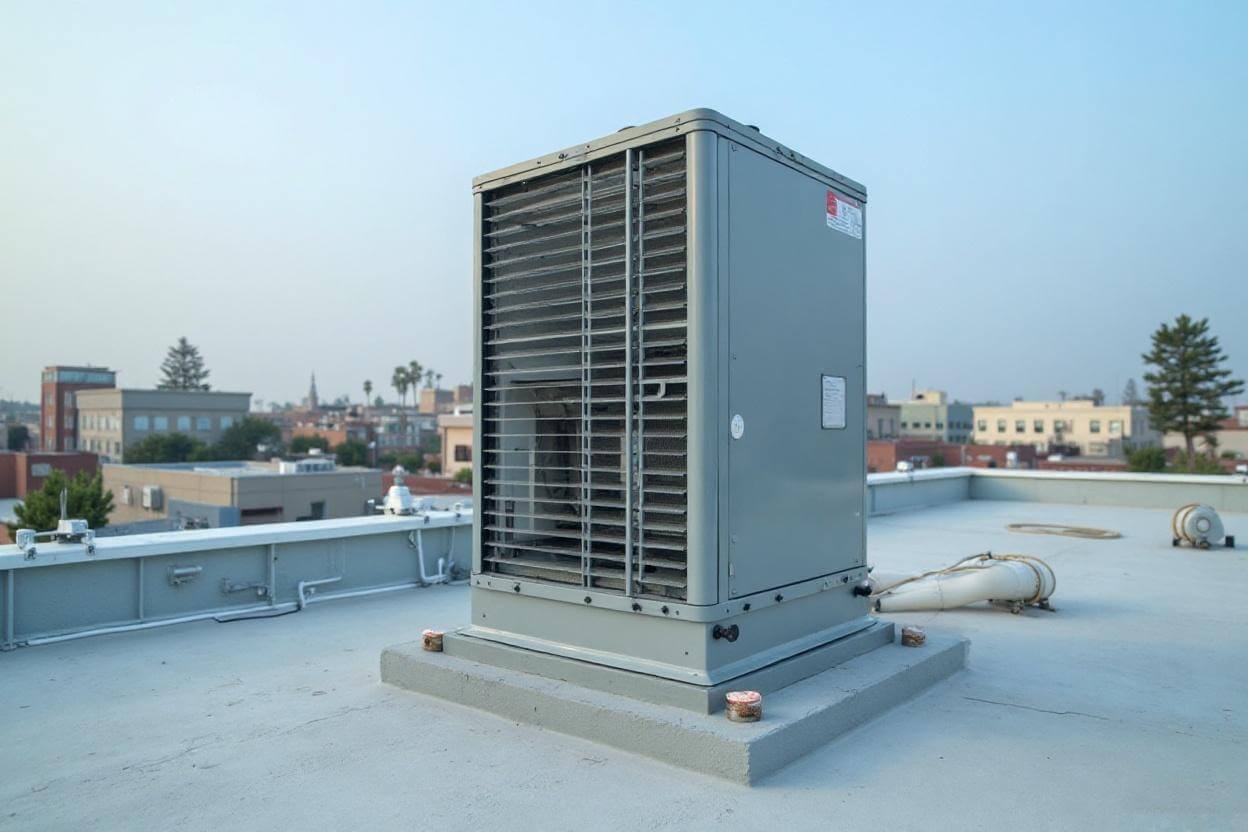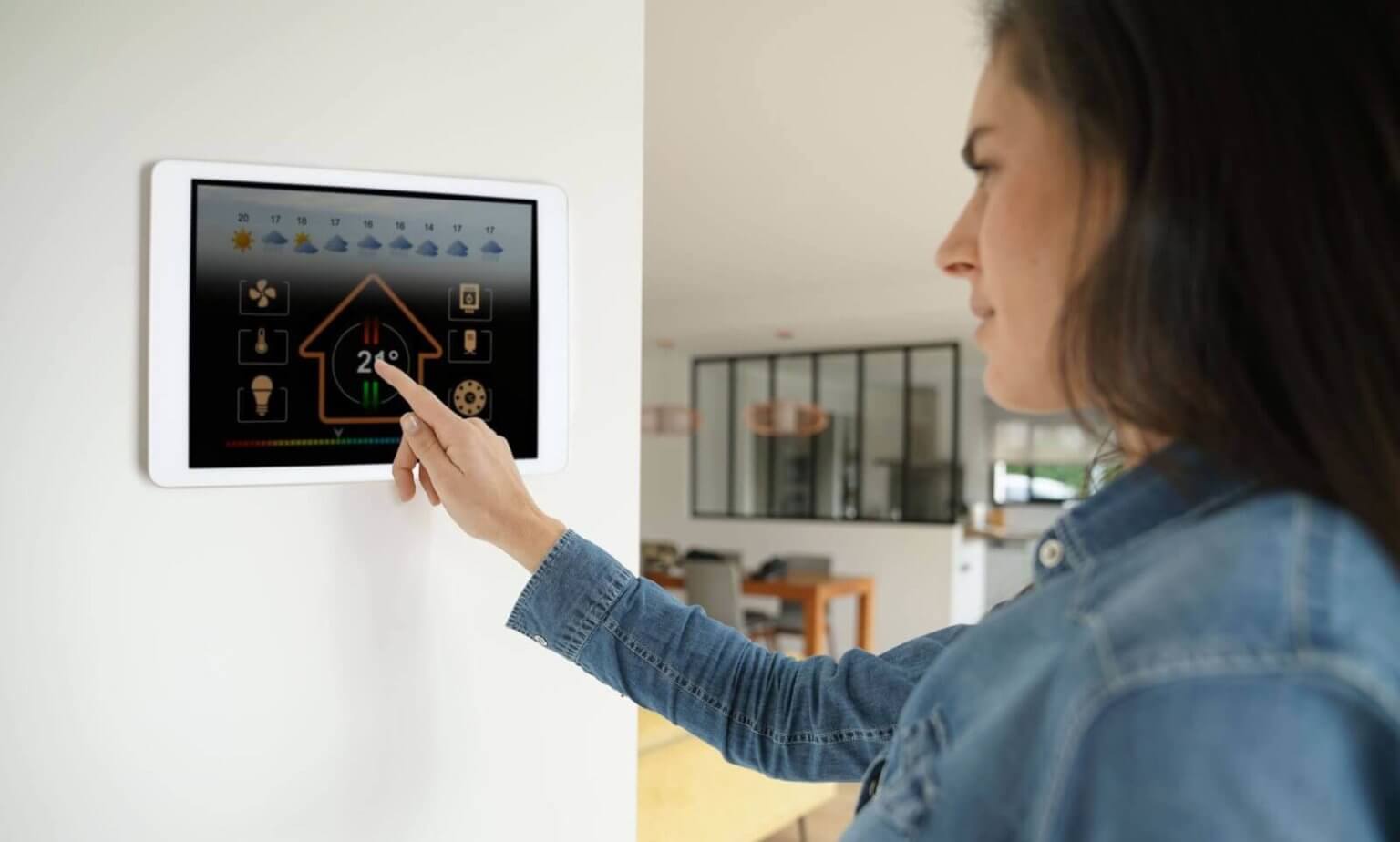Homeowners in Canoga Park ask this question a lot: is it time to replace the whole heating and cooling system, or can it be upgraded? An HVAC retrofit sits between repair and full replacement. It means keeping the parts of your system that still have life left, while upgrading specific components to raise efficiency, cut utility costs, improve comfort, and meet current code. The goal is straightforward: bring an existing system up to modern standards without paying for a complete changeout.
Season Control Heating & Air Conditioning has upgraded and retrofitted thousands of systems across the West Valley. In older Canoga Park homes near Owensmouth, Eton, and De Soto, the ductwork, electrical service, and attic access often limit a like-for-like replacement. A retrofit lets a homeowner focus spending where it matters most: the components that deliver measurable performance gains, safer operation, and better control.
How a Retrofit Differs From a Replacement
A full replacement pulls out the entire system—furnace or air handler, condenser, coil, line set, and often ductwork. A retrofit targets the weak links. For example, a homeowner with a strong gas furnace might upgrade the outdoor condenser and indoor evaporator coil, add a proper return, seal ducts, and install a modern thermostat. The result is lower energy use and quieter operation without tearing the house apart.
The difference shows up in cost and downtime. Retrofitting often costs less than a full system replacement and can be completed faster, especially if attic or crawlspace access is tight. It also avoids unnecessary landfill waste. The trade-off is that results depend on the baseline condition. If the duct system leaks 30 percent of its air or the furnace heat exchanger is cracking, retrofitting around those problems makes little sense. A good contractor knows when to upgrade and when to replace.
What Counts as an HVAC Retrofit
The word “retrofit” covers several upgrade types. In Canoga Park, the most common HVAC upgrades and retrofits include refrigeration-side improvements, airflow and duct upgrades, control and electrical upgrades, and indoor air quality and ventilation upgrades.
Refrigeration-side work often starts with the condenser. Many homes built or remodeled between 1995 and 2010 still run builder-grade condensers with SEER ratings around 10 to 13. Upgrading to a 16 to 18 SEER2 heat pump or AC condenser, matched with a new coil, cuts cooling costs by 20 to 40 percent depending on usage. In mild Valley fall and spring weather, a heat pump retrofit can also handle heating, which lowers gas usage for homes that want to save on fuel or reduce combustion in the house.
Airflow and duct upgrades pay off more than most people expect. The system cannot perform if the ducts leak, are undersized, or choked with kinks. A proper retrofit seals the duct system to SMACNA standards, corrects undersized returns, and may replace runs that bottle-neck airflow. This protects the new equipment and reduces runtime. It also evens out temperature swings between rooms, a common complaint in single-story ranch homes off Sherman Way and Roscoe.
Control and electrical upgrades include new smart thermostats, dedicated equipment circuits, and surge protection. Many older air handlers share circuits or lack proper grounding. A retrofit fixes those issues and brings the system in line with current code. With variable-speed equipment, an ECM blower retrofit can pair with an existing furnace cabinet to reduce noise and improve humidity control without a full furnace change.
Indoor air quality and ventilation matter due to wildfire smoke days and summer dust. Adding a media filter cabinet with a true MERV 11 to 13 filter reduces pressure drop and improves filtration over one-inch filters. In homes with tight windows and doors from past energy upgrades, a fresh-air damper tied to the blower cycle or an energy recovery ventilator can maintain healthier indoor air.
Signs a Retrofit Makes Sense
Consider a retrofit if the system still runs, but comfort and bills tell a different story. Rooms that never cool off, ducts that pop and whistle, or a condenser that short cycles in the mid-afternoon usually point to airflow and control issues rather than a dead compressor. If the furnace is 8 to 12 years old with a clean heat exchanger but the AC is struggling, replacing the outdoor unit and coil while keeping the furnace can be a smart step. Likewise, if the ductwork is sound but the thermostat is basic and control logic is outdated, a thermostat and control board upgrade can unlock features like staged cooling and fan delay.
On the other hand, a retrofit is a poor fit if there are safety flags. A cracked heat exchanger, severe refrigerant leaks with oil staining along the line set, or ducts contaminated with vermin or mold growth call for broader action. In those cases, a targeted upgrade would leave problems in place and risk a recurrence.
What a Proper Retrofit Includes During Evaluation
A good retrofit begins with data, not guesses. For a typical Canoga Park home, Season Control performs a load calculation, a static pressure test, and a duct leakage assessment. Load calculations account for size, insulation, window area and orientation, shading, and occupancy patterns. This step prevents oversizing, which causes humidity and short cycling issues during late-summer evenings when the sun drops behind the Santa Susana foothills.
Static pressure reveals airflow bottlenecks. Many systems in the area run above 0.8 inches of water column, which strains motors and reduces heat transfer across the coil. If pressure drops into the recommended range after duct changes, even a modestly efficient condenser will show better real-world results. Duct leakage testing quantifies waste. Sealing leaky joints and boot connections often yields savings on par with upgrading equipment.
Thermal imaging during a site visit can find attic duct hot spots and missing insulation. A camera inspection of the coil and blower wheel often catches dirt loading that robs capacity. This kind of evaluation shapes an upgrade plan that spends money where it works.
Common Retrofit Pathways in Canoga Park
A popular path is a new condenser and matching coil with an ECM blower kit. Many Lennox and Carrier furnaces from the 2000s accept ECM retrofit motors. They ramp slowly to reduce noise at startup, then maintain steady airflow. Pairing this with a two-stage condenser smooths comfort on 90 to 95-degree days without running the unit at full blast all afternoon.
Heat pump conversions are gaining ground. Gas rates have been volatile, and heat pumps have grown more capable at mild low temperatures typical of Valley winters. A dual-fuel setup allows the existing gas furnace to handle very cold nights while the heat pump manages most heating hours. This path lowers annual operating costs without abandoning the furnace or the gas line.
For townhomes and condos near Canoga Park High School, space constraints favor ductless mini-splits as a retrofit. A single outdoor unit can feed one to four indoor heads. This keeps construction inside light and avoids major drywall repair. It also solves hot room issues where existing ducts cannot reach or cannot carry enough air.
Duct sealing and return upgrades often stand alone. If the budget this year cannot support a new condenser, tackling leakage and undersized returns gives immediate comfort gains. It also prepares the home for a future equipment upgrade, since the new system will land in a duct system that supports its airflow needs.
What Homeowners Actually Notice After a Retrofit
Beyond lower bills, the daily experience changes. The system runs longer on low capacity, which feels calmer and holds even temperatures. Bedrooms on the far side of the home from the furnace finally match the thermostat setting. The whine from a pitted blower wheel quiets down with a new ECM motor. Dust settles less on furniture when the filter cabinet accepts a deeper, higher MERV filter without choking airflow.
During summer heat waves, coils stay cleaner thanks to better filtration, so capacity holds through August rather than fading after the first hot spell. Reduced static pressure lowers blower watt draw, which trims usage that often goes unnoticed in simple payback math. On wildfire smoke days, upgraded filtration and programmed fan cycles keep indoor PM2.5 lower without running the AC nonstop.
Costs, Rebates, and Payback in the West Valley
Retrofit pricing depends on scope. A duct sealing and return upgrade for a single-story, 1,600-square-foot home typically runs in the low four figures. A condenser and coil retrofit with refrigerant re-pipe, code updates, and a new thermostat often lands in the mid to high four figures, depending on SEER2 level and refrigerant line accessibility. Adding an ECM blower conversion or a new air handler moves the project higher. Heat pump conversions vary by electrical panel capacity and whether a dedicated circuit is needed.
Local and utility rebates change during the year. Heat pump rebates have been common, and some programs support duct sealing and smart thermostats. Season Control tracks these and applies them on the job where possible, which shortens payback. In Canoga Park, homeowners with average cooling usage often see 15 to 35 percent lower electric bills after a well-planned retrofit. The payback period can range from two to six years based on hours of operation and kWh rates.
Code and Permitting Considerations in Canoga Park
Retrofits must meet current mechanical and electrical codes, including proper refrigerant line sizing, trap and drain configurations, disconnect and breaker sizing, smoke and carbon monoxide detector requirements, and, for gas furnaces, flue design and combustion HVAC upgrades & retrofits air. In Los Angeles County jurisdictions, Title 24 requires duct testing for many changeouts. This catches leakage that could negate an efficiency upgrade. A contractor who pulls permits and documents test results protects resale value and reduces risk.
For older homes near Cohasset and Saticoy with original panels, adding a heat pump may require panel evaluation. Sometimes load-shedding devices or dedicated circuits solve the issue without a full service upgrade. The key is a site visit with eyes on the panel label, conductor sizes, and available breaker space.
The Retrofit Process With Season Control
A retrofit project moves in clear steps. First, a comfort and energy assessment sets targets, not guesses. Second, the team gathers measurements: load, static pressure, leakage, supply and return temperatures, blower speed, and amp draws. Third, an upgrade plan is drawn with options at different price points. Homeowners see what each option accomplishes and what it leaves for later. Fourth, installation follows a clean sequence that avoids dust and debris inside living areas. Fifth, commissioning verifies results, which includes refrigerant charge by weight and superheat/subcooling, airflow balancing, and control programming.

Homeowners often worry about disruption. In most cases, a retrofit takes one to two days on site. Duct sealing and return work may add a day if access is tight. For condos or multi-family units, Season Control coordinates with building management and observes quiet hours where required.
Trade-Offs and Edge Cases
A retrofit does not fix everything. If the home has serious envelope issues—single-pane west-facing windows, little or no attic insulation—the HVAC system cannot overcome heat gain without long runtimes. In such cases, Season Control often advises a split approach: add attic insulation and radiant barrier or window film, then size the HVAC upgrade to the improved load. That avoids oversizing and reduces noise.
Another edge case is refrigerant line routing. If the existing line set runs through walls that cannot be accessed and the size is wrong for the new condenser, the project may require creative solutions, such as running new lines in exterior conduit painted to match the stucco. This looks clean when done well and prevents performance loss from using an old undersized line set.


Finally, compatibility matters. Mixing a high-SEER2 condenser with an old fixed-speed blower can deliver disappointing results. The blower may not support the necessary airflow at low static pressure, which hurts efficiency. Matching components avoid this trap.
Why Local Experience Matters in Canoga Park
Local climate and housing stock shape what works. Summer high temperatures in the low to mid-90s with low nighttime humidity call for longer, lower-capacity cooling rather than big bursts of cold air. Homes built in the 1950s and 1960s have tight soffits and smaller returns. Many 1980s townhomes have limited condensate drain options and zero attic access. Season Control’s crews run into these conditions daily, so solutions are practical and fast rather than theoretical.
Vendor relationships also matter. Access to the right coil match for a specific furnace model prevents mismatches that derate efficiency. Having on-hand media filter cabinets sized for common return drops in the Valley speeds installation and keeps the return quiet and airtight.
Simple Upgrades That Punch Above Their Weight
Some retrofits deliver gains out of proportion to their cost. A high-quality thermostat with dehumidification logic is one. Even in the dry Valley climate, evening humidity can bump comfort. Fan delay settings and lower fan speeds during cooling help the coil pull more moisture, which makes rooms feel cooler at the same setpoint.
A deeper filter cabinet is another. Converting a one-inch filter slot to a four-to-five-inch cabinet cuts pressure drop dramatically while improving filtration. Coils stay clean longer, which preserves capacity. Homeowners also change filters less often.
Finally, return air matters. Many noisy systems suffer from too little return. Adding a second return or enlarging the existing one quiets the system and raises efficiency. This upgrade often fits within a single day and requires minimal drywall work.
What To Ask During a Retrofit Consultation
- Which components will be reused, and why are they worth keeping? How will airflow be measured before and after the work? What duct leakage target will the crew aim for, and how will results be documented? What is the expected SEER2 or HSPF2 of the matched system, and is there a certified match report? Which local rebates apply today, and who handles the paperwork?
These questions keep the project grounded in performance rather than parts. They also help compare bids on equal terms.
Maintenance After the Retrofit
Upgrades work best with maintenance. A clean coil, correct refrigerant charge, and proper blower settings carry the gains forward. Season Control recommends twice-a-year service: cooling check in spring, heating check in fall. Filter changes depend on dust and pets, but most homes do well with filter replacement every three to six months. If wildfire smoke hits, filters load faster. A quick check after smoke days prevents airflow loss.
Duct systems should be rechecked after any attic work. Cable installers and insulation crews can disturb sealed joints. A brief inspection maintains the integrity of the retrofit.
Ready for HVAC Upgrades and Retrofits in Canoga Park?
An HVAC retrofit meets homeowners where they are. It targets the weak links, respects budgets, and raises comfort in real ways. For many Canoga Park homes, it is the smart middle path between patching an aging system and paying for a full replacement before it is needed.
Season Control Heating & Air Conditioning serves Canoga Park, West Hills, Winnetka, and nearby neighborhoods. The team evaluates, designs, and installs HVAC upgrades and retrofits that fit the home and the climate. If a retrofit makes sense, they will show the plan and the numbers. If a replacement is the better move, they will say so and explain why. Call or schedule online to book a retrofit assessment, secure current rebates, and get a clear, written plan for comfort that holds up through Valley summers and cool winter nights.
Season Control Heating & Air Conditioning provides HVAC services in Canoga Park, CA. Our team installs, repairs, and maintains heating and cooling systems for residential and commercial clients. We handle AC installation, furnace repair, and regular system tune-ups to keep your home or business comfortable. We also offer air quality solutions and 24/7 emergency service. As a certified Lennox distributor, we provide trusted products along with free system replacement estimates, repair discounts, and priority scheduling. With more than 20 years of local experience and hundreds of five-star reviews, Season Control Heating & Air Conditioning is dedicated to reliable service across Los Angeles.
Season Control Heating & Air Conditioning
7239 Canoga Ave
Canoga Park,
CA
91303,
USA
Phone: (818) 275-8487
Website: https://seasoncontrolhvac.com/hvac-retrofits-upgrades-la-ca/